Is this the characterful feature your kitchen could be missing? 10 ways designers bring paneling into a hardworking space
Characterful, textural, and totally timeless – this is your sign to bring paneling into your kitchen design

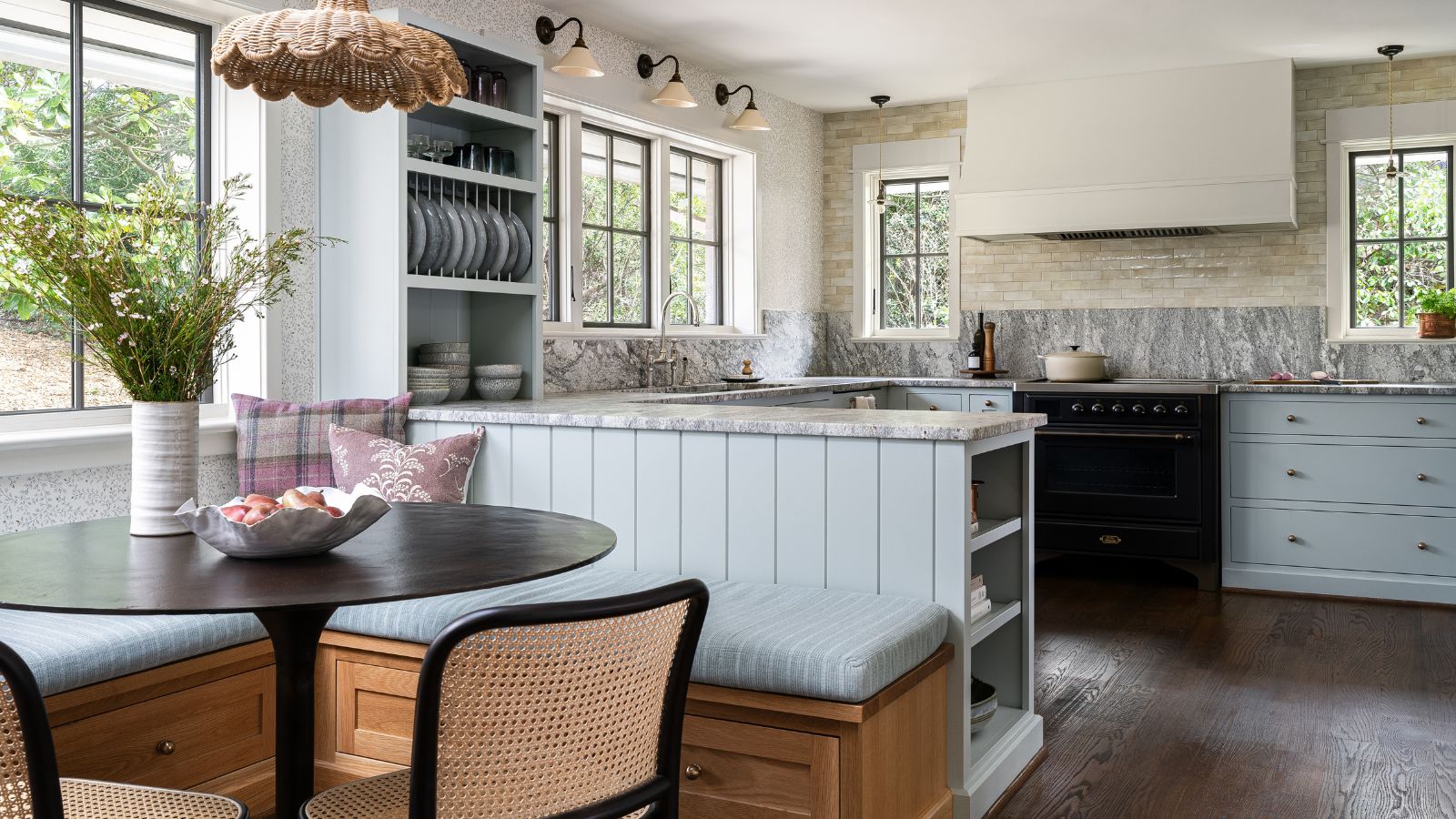
- 1. Draw the eye up with kitchen paneling
- 2. Embrace fully paneled walls for a country look
- 3. Introduce paneled cabinets
- 4. Panel open shelving for a chic focal point
- 5. Use panels to add interest to the back of cabinets
- 6. Panel drench your kitchen for a characterful scheme
- 7. Go for a fully paneled kitchen backsplash
- 8. Add paneling to a cozy banquette
- 9. Try a more modern look with slatted panels
- 10. Pair paneling and tiles for a subtle contrast
Kitchen paneling can instantly transform a room. From the walls to the cabinets and even the ceiling, it's a simple (and age-old) way to add texture and interest to every surface.
While more modern decorating approaches have favored painted walls and statement tiles, paneling in all its forms can add a layered, characterful look to your kitchen ideas that truly transcends trends.
And designers agree that it's an enduring way to create visual interest. Here are a few ways to embrace this textural look, from traditional approaches to more unexpected applications – there's a paneling idea here for every kitchen style.
10 ways to introduce paneling to your kitchen
Whether you're looking for classic wainscoting ideas or unexpected places to introduce wood finishes, these kitchen paneling ideas have you covered – and they all exude timeless style.
1. Draw the eye up with kitchen paneling
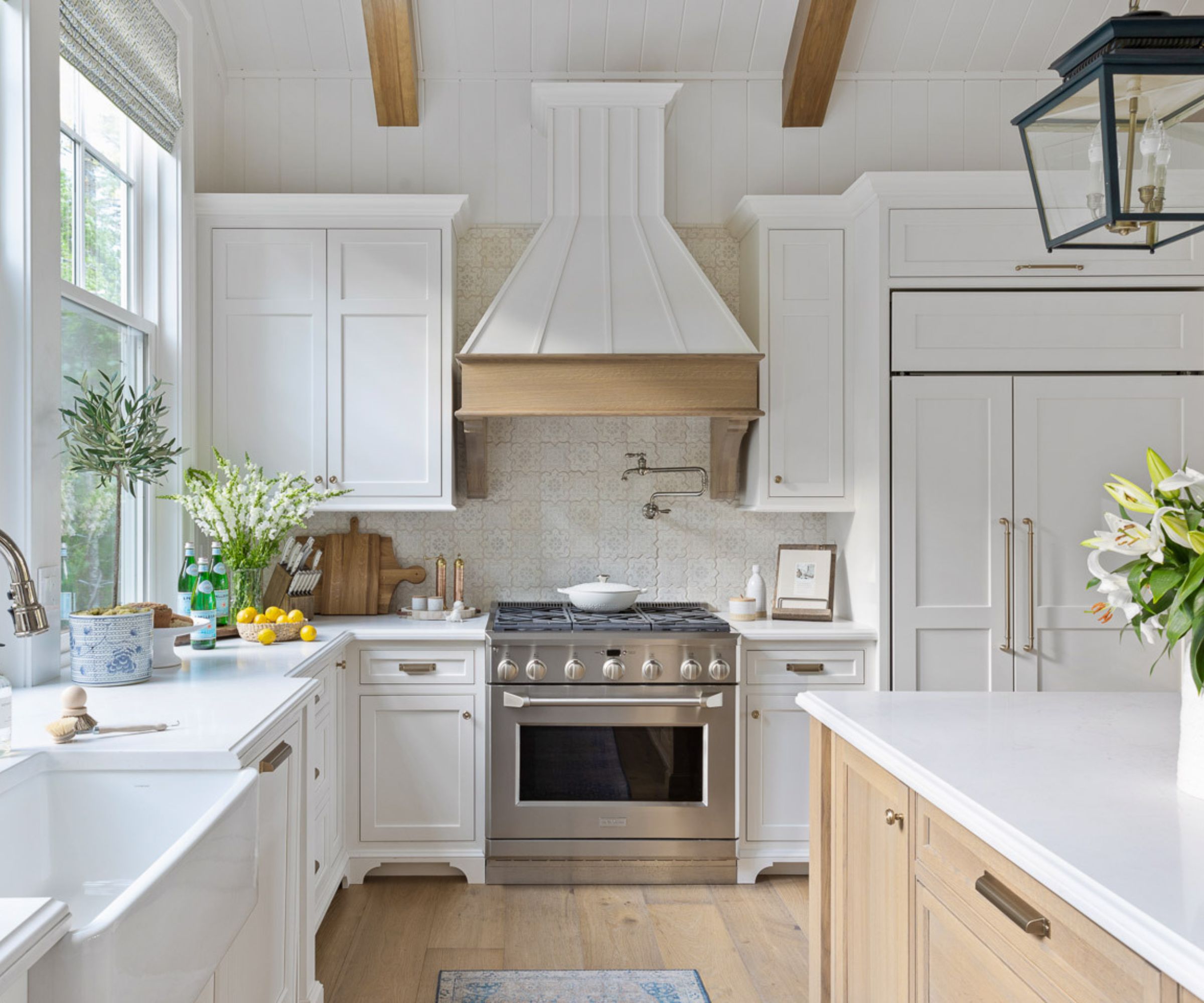
While you might immediately think of kitchen walls when it comes to paneling, there are so many other ways to introduce it – including the fifth wall. Ceiling paneling ideas are a great way to add interest to the highest point of your kitchen and add a more characterful detail.
'BVA wrapped this kitchen and adjacent family room in painted board paneling on the walls and ceiling that matches the cabinetry. Along with the natural wood beams and nautical detailing like the fun porthole, the wood paneling evokes the home’s coastal location,' explains Ellen Hatton of BVA BarnesVanze Architects.
2. Embrace fully paneled walls for a country look
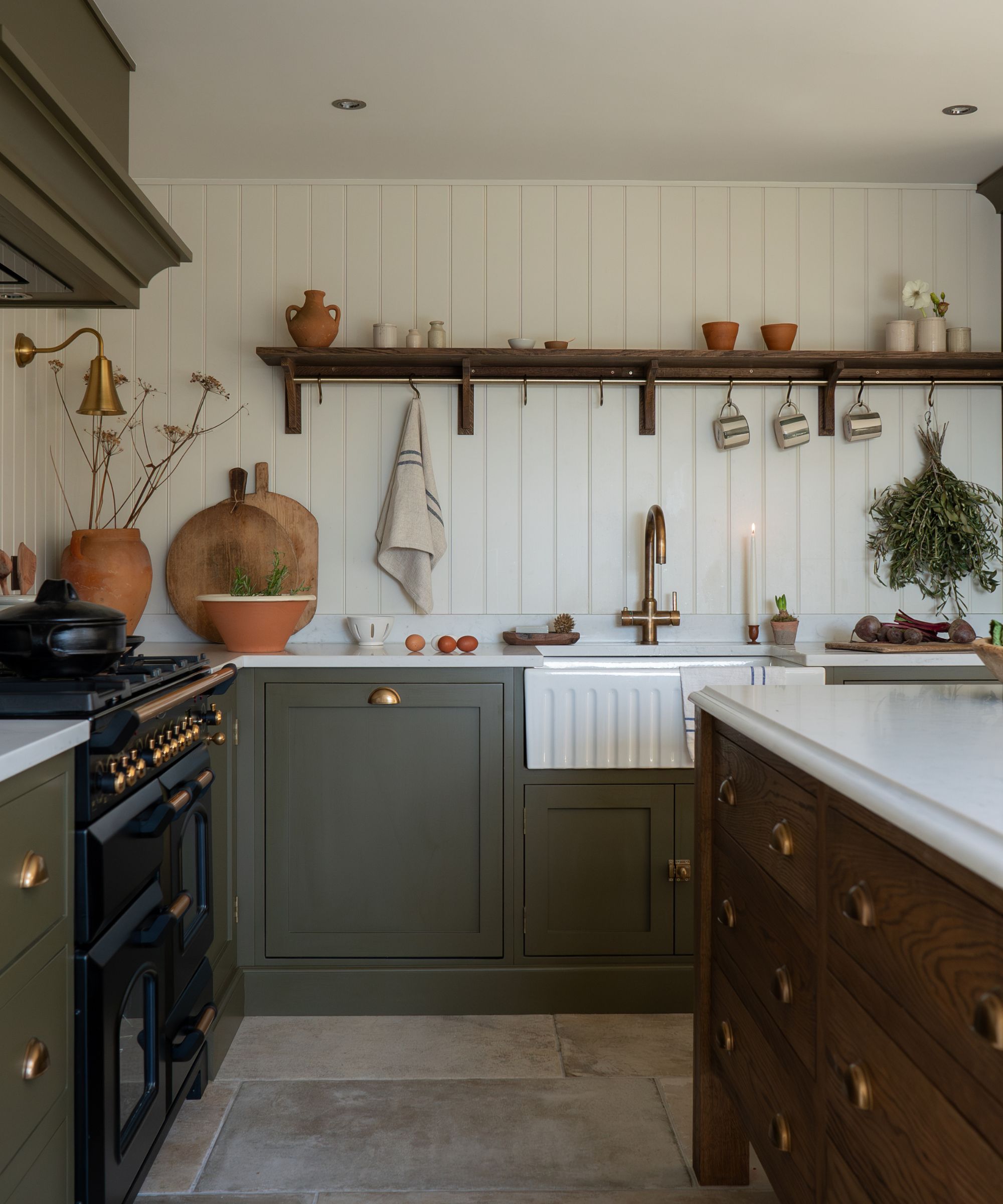
A favorite feature in cozier rooms, wall paneling works just as well in a kitchen. It offers a cozier, more tactile wall covering than tiles or plain paint, instantly introducing a more traditional feel.
Design expertise in your inbox – from inspiring decorating ideas and beautiful celebrity homes to practical gardening advice and shopping round-ups.
However, you can take it one step further with paneling paint ideas, as seen in this kitchen. Simply painting the panels white brightens the room and creates a stronger contrast with the green cabinetry. It's a fun take on a classic country kitchen.
3. Introduce paneled cabinets
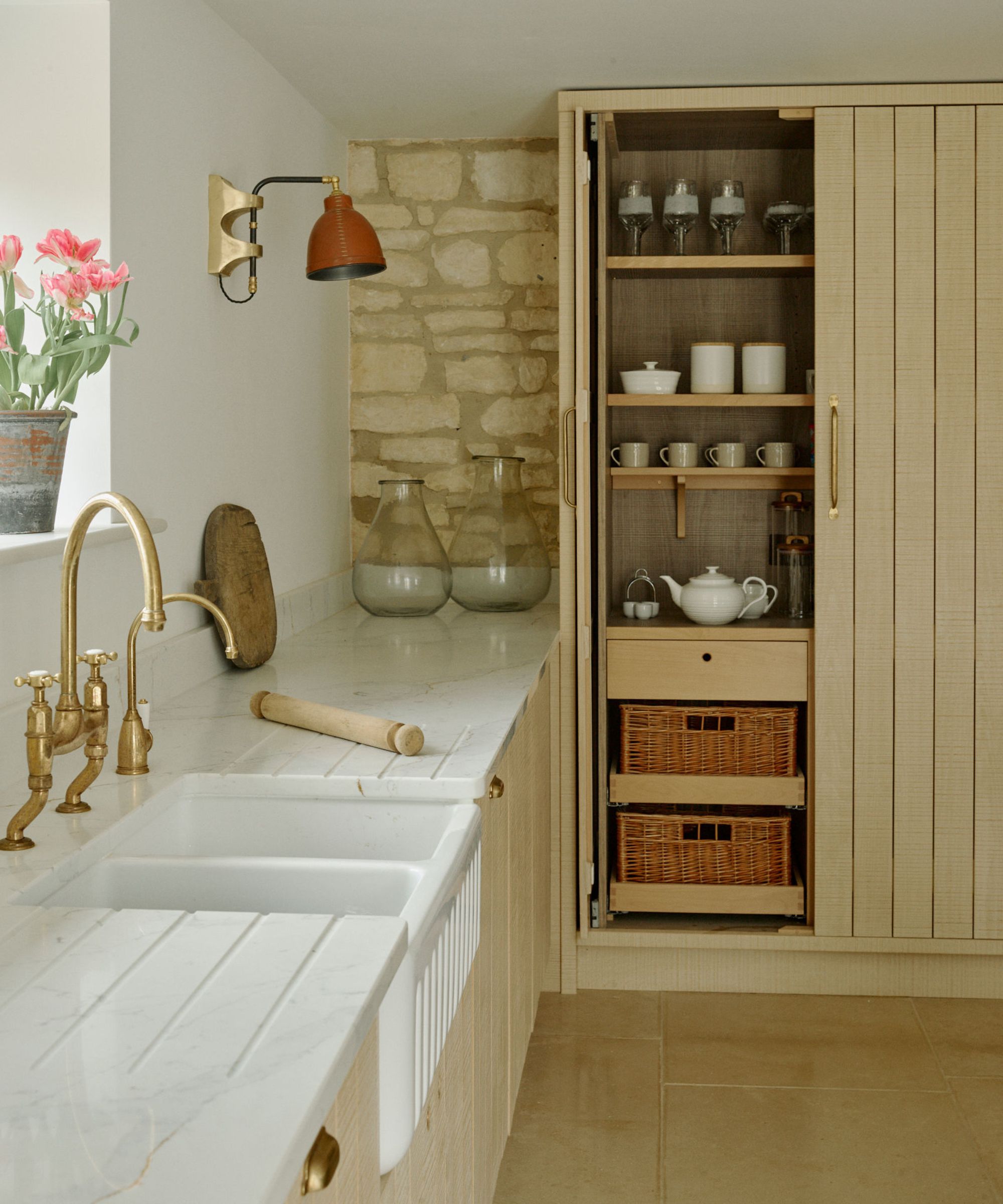
Kitchen paneling isn't restricted to the walls and ceiling. Opting for paneled cabinets can be oh-so effective, introducing a rustic finish in a more unexpected way, like in this design, where paneled cabinet fronts pair with exposed stone walls and warm neutral hues.
'The paneled cabinetry in this project was designed to reflect the character of the building’s agricultural past. We chose a finish with a slightly rougher texture to bring a sense of authenticity and age, in keeping with the barn’s original use as a granary,' explains interior designer Lauren Gilberthorpe.
'The subtle irregularities in the surface give the kitchen an organic feel that grounds the space within its rural setting. While the design carries a clear rustic influence, the layout and functionality remain entirely practical for modern living. The paneled doors introduce a level of detail and craftsmanship that elevates the room without feeling overly refined, striking a careful balance between heritage and contemporary comfort.'
4. Panel open shelving for a chic focal point
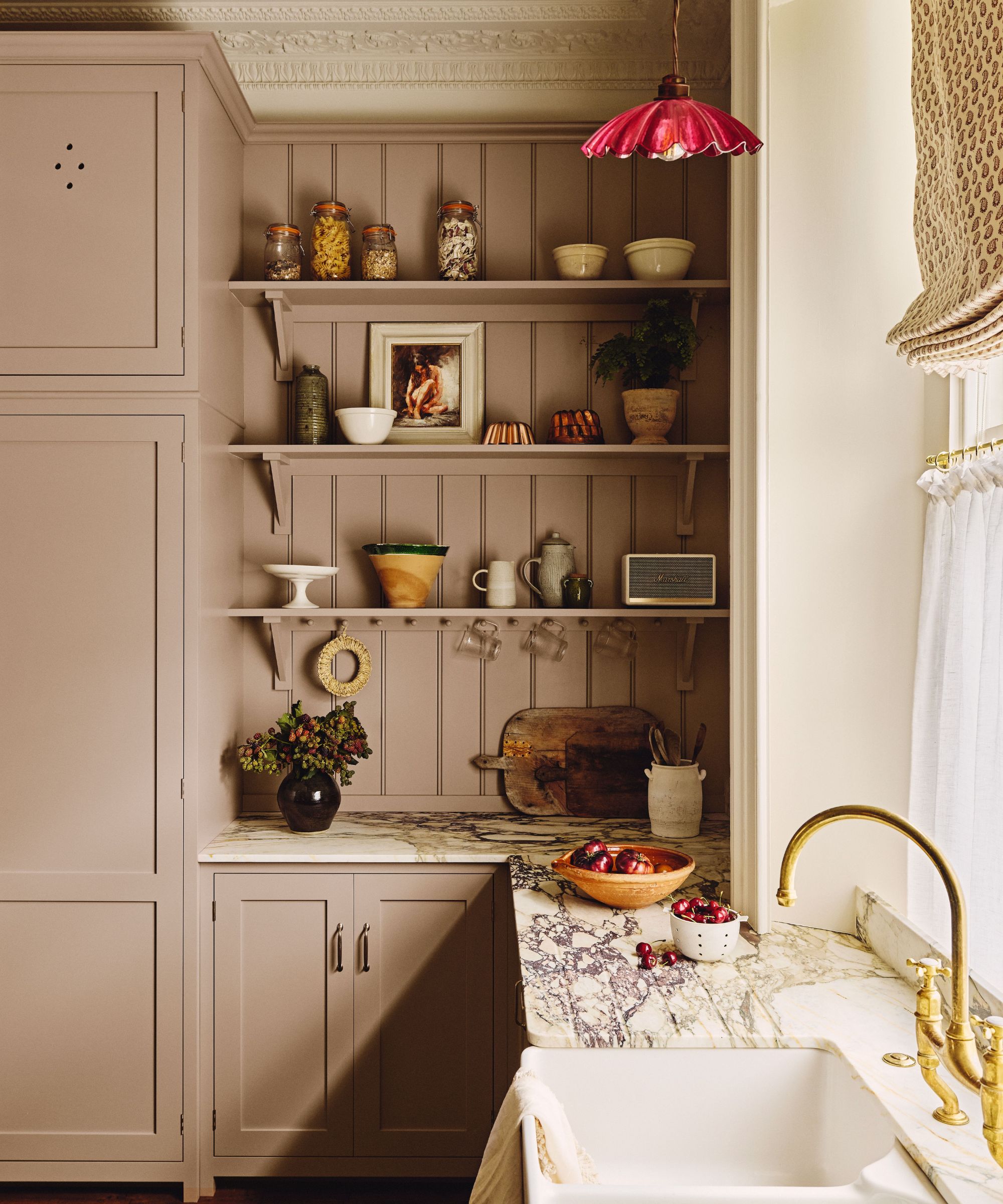
If your kitchen is feeling a little flat or lacks interest, people often recommend introducing another hue to your palette. However, sometimes it's more about texture than it is color.
This kitchen is a perfect example – the continuous run of pink cabinets and shelving could easily feel a bit monotonous, but the simple addition of the paneling behind the kitchen shelves adds texture and dimension to the design.
It's a subtle way to add kitchen paneling, but it's truly effective. Your eye is drawn to this more decorative area, which showcases the homeowner's personality. It adds plenty of character without overwhelming the whole design.
5. Use panels to add interest to the back of cabinets
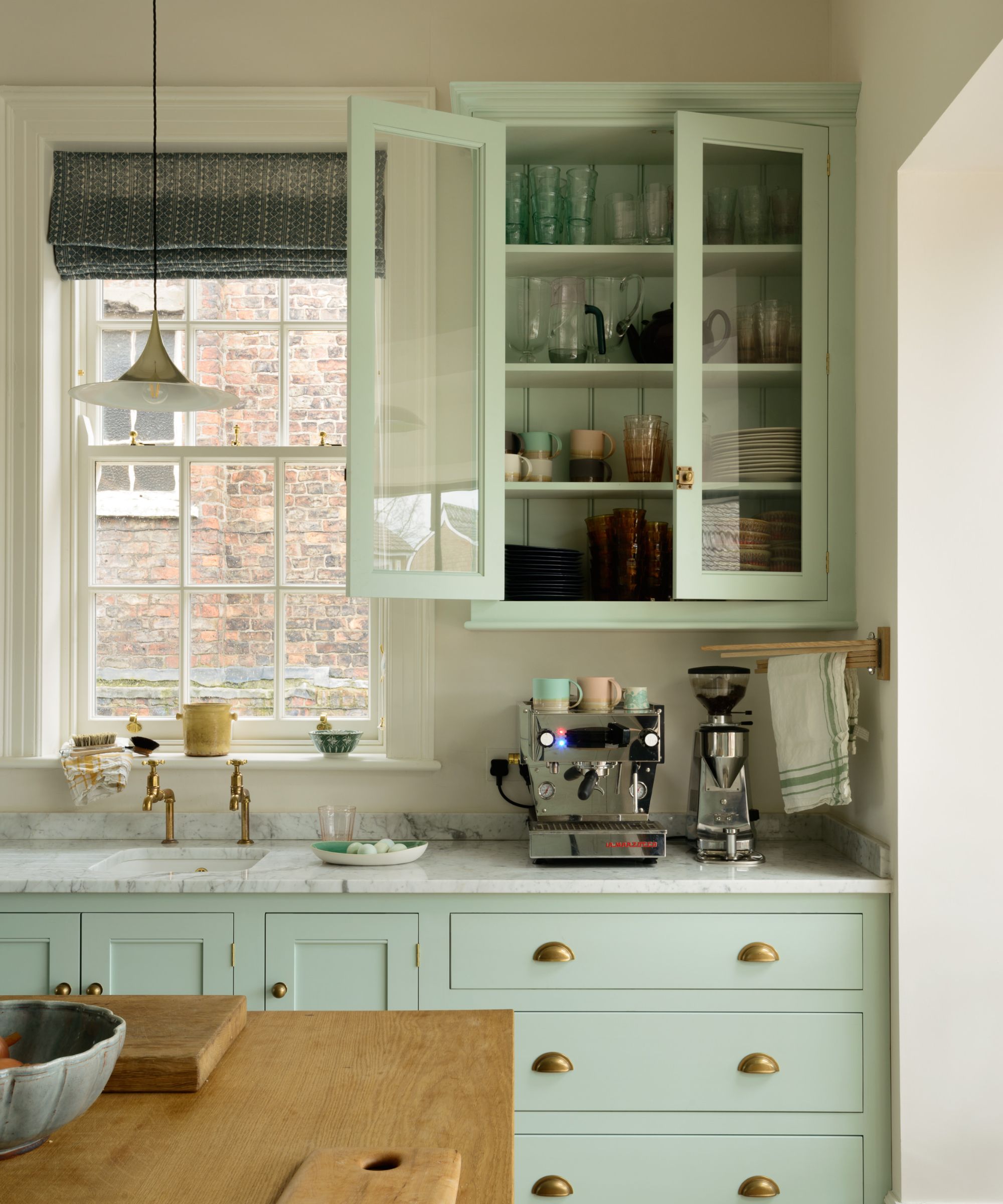
Kitchen paneling ideas don't need to be a dominant feature in your design. Adding it in subtly to create interest in standard features is a fun way to give your space a more bespoke feel, like in this kitchen, which features paneling at the back of the cabinets.
'For us, beadboard is more of a feature within a kitchen cabinet than on the exterior, such as a door. We like to use it in the back of cabinets, especially pantry cupboards,' says Helen Parker, creative director at deVOL Kitchens.
'We love it as a subtle hint in the backs of cabinets; it appears a little more detailed than just a flat boarded finish. It's not a look for someone trying to achieve a minimal and sleek look, though, as it is detailed and textured.'
6. Panel drench your kitchen for a characterful scheme
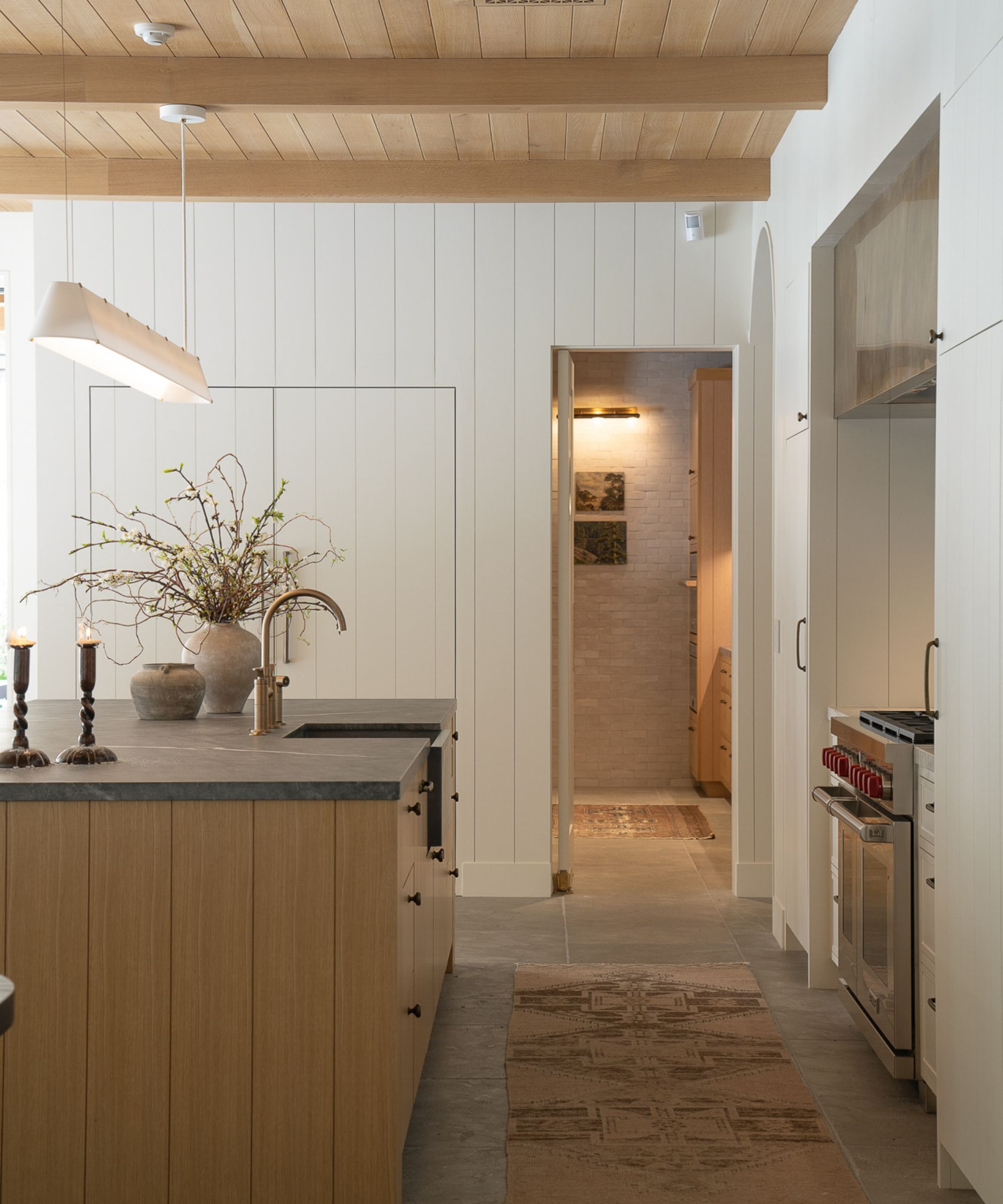
The drenching trends have been dominating, from color to tiles to patterns, but in the California kitchen, wood drenching with paneling is a great way to introduce abundant visual interest. Wrapping your room in wood instantly adds warmth and texture that you just can't achieve with any other decorating method.
In this kitchen, paneling has been added to the walls, ceiling, cabinets, and kitchen island. To give the room dimension, the walls have been painted white, while the rest remain a natural wood tone. It's a simple application that gives a kitchen lots of character.
7. Go for a fully paneled kitchen backsplash
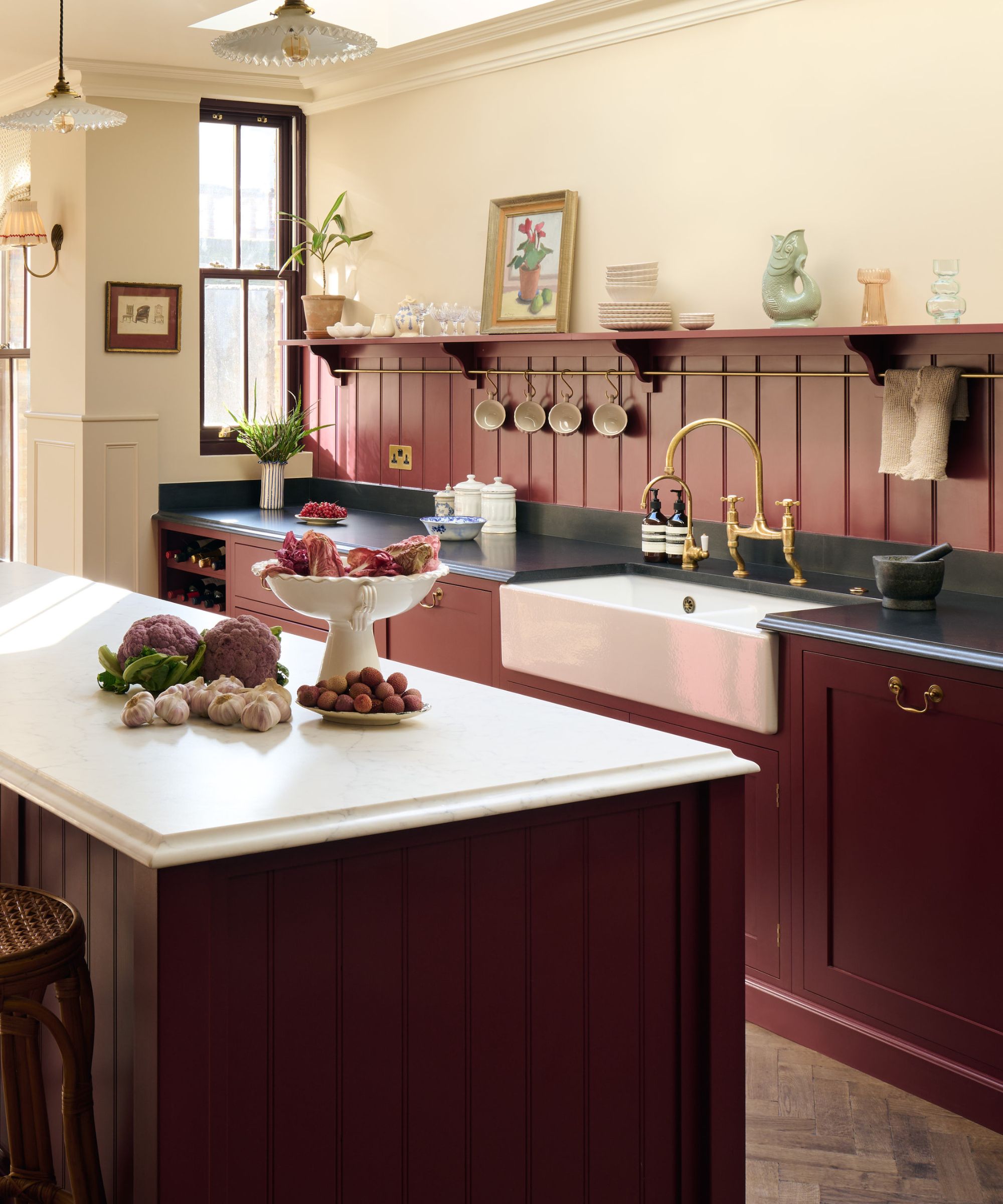
A big kitchen trend at the moment is to use paneling in unexpected ways. And a paneled kitchen backsplash is a timeless way to create a chic feature reminiscent of country style.
'We often use beadboard as wall cladding – it adds a warmth to the room and is often done on quite a large scale across a whole wall,' says Helen. It can be used as a simple wall finish or as a more traditional kitchen backsplash option, like in this design.
'We top the beadboard with a peg rail or shelf, and this can give a really lovely and very Shaker feel to a room. Wood on walls is somehow quite comforting and transforms a plain plastered wall so drastically that it really can be worth the extra cost.'
8. Add paneling to a cozy banquette

In this light blue kitchen, paneling has been introduced in several areas; however, the most effective is the paneled peninsula. It forms the back of the banquette seating, so the paneling becomes the perfect zoning feature.
'Vertical tongue and groove paneling is used at the interior of cabinets with open shelving, acts as a backsplash at the coffee bar area, and also provides a finished appearance at the backside of the peninsula and side panel at the refrigerator enclosure,' explains Michelle Vassallo, of MV Architects, who designed the kitchen.
'The tongue and groove adds a visual texture and depth that ties into the mix of materials used in the space. Due to the width of the open kitchen and seating area, the space can feel long, but the vertical tongue and groove focal points help to break up the horizontality of the stone counters and cabinetry, drawing the eye upwards.'
9. Try a more modern look with slatted panels
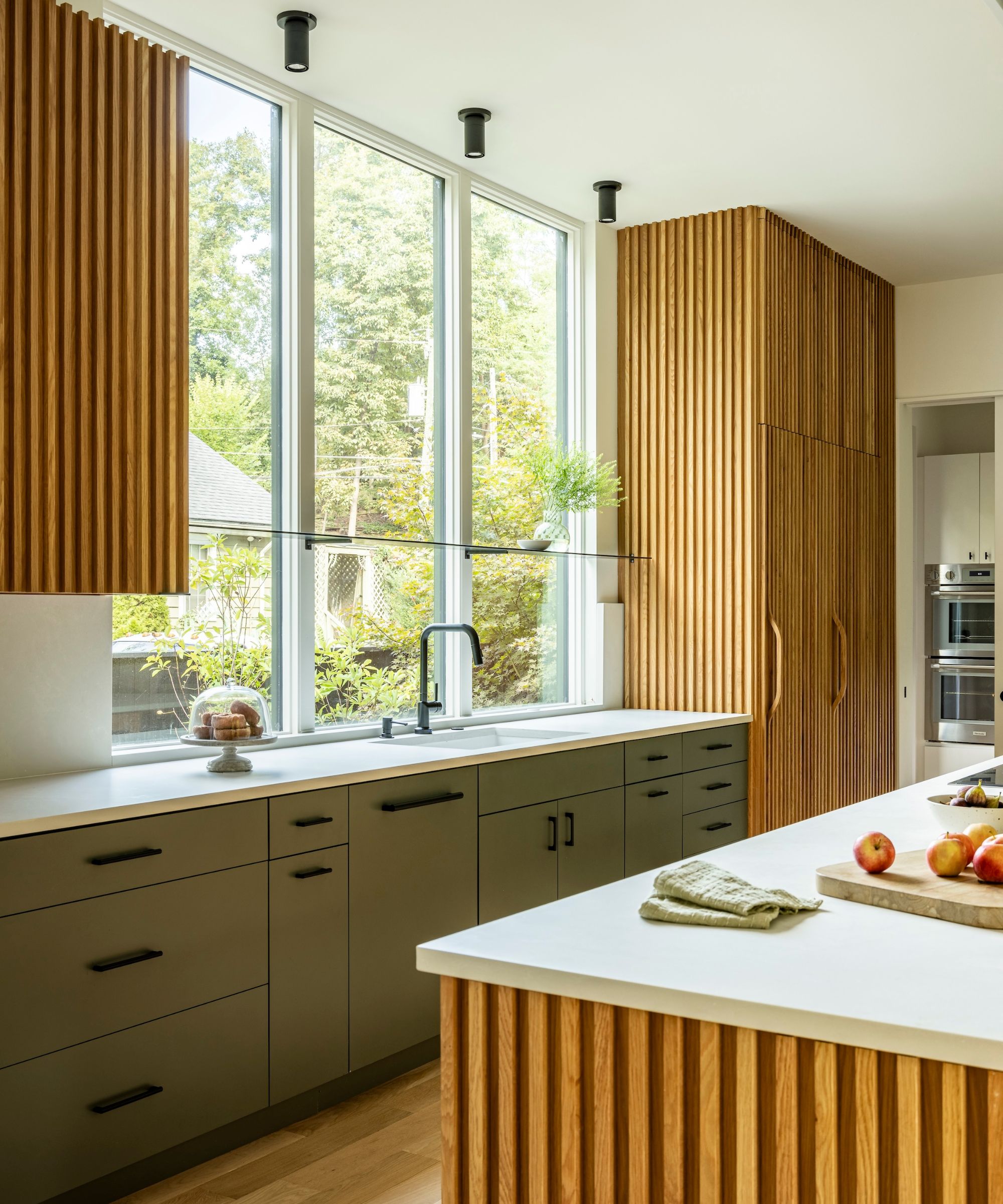
While the most traditional style of paneling is often favored for its timeless appeal, there are a few alternatives worth trying. Particularly in more contemporary or Scandi kitchens, more slatted designs, such as tambour paneling, are popular choices.
'These are white oak slats that are integrated into the wall cabinets, island, and fridge/freezer. The handles for the fridge and freezer are fully integrated into the slats – a really lovely detail,' says interior designer Yuri Sagatov, of ODE Design.
The slatted paneling really brings the scheme to life – it adds texture and visual interest, while the warm tone of the wood contrasts beautifully with the muddy green color of the cabinets.
10. Pair paneling and tiles for a subtle contrast
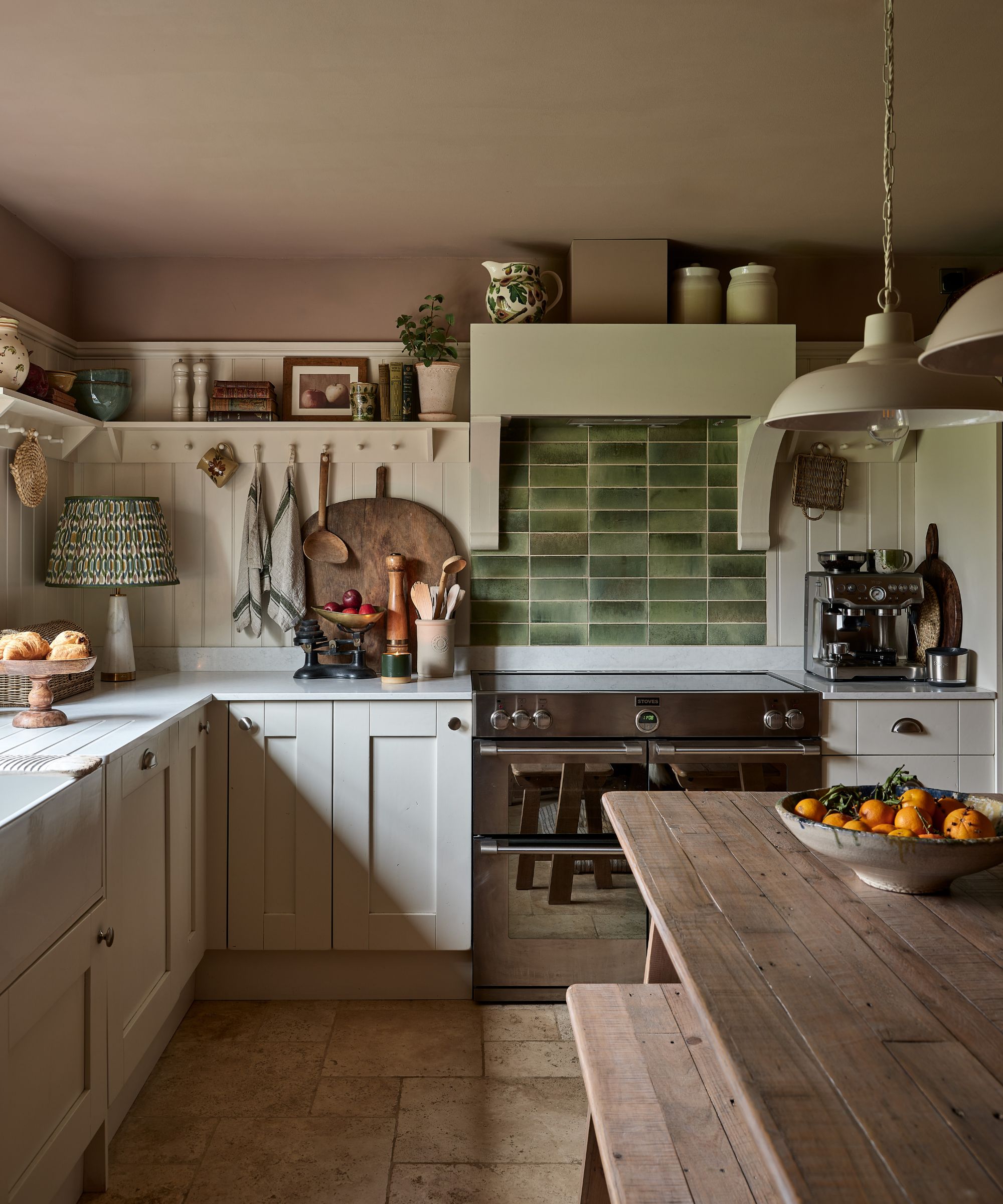
Don't be afraid to mix materials in your kitchen design – pairing paneling with tiles is a great way to add contrast and bring different textures into your design. It's also a really practical choice for a kitchen, too.
'Paneling has this wonderful knack of softening a kitchen, almost like a fabric backdrop for everything else going on. It’s practical too, easy to paint, easy to live with, but what we love most is how it plays with tiles,' says Grazzie Wilson, head of creative at Ca’ Pietra.
'Side by side, the contrast feels effortless. The painted boards quietly get on with framing the space, letting those rich, glossy green tiles step forward and do their thing. It’s that push-and-pull between calm and character that makes a kitchen feel grown-in rather than just fitted.'
If you were wondering if paneled walls are still on trend, rest assured that they very much are, especially in the kitchen. They bring texture and interest to schemes of every style and size – plus they can be really easy to do yourself. Just make sure you read up on how to panel a wall before experimenting in your kitchen.

I’ve worked in the interiors magazine industry for the past five years and joined Homes & Gardens at the beginning of 2024 as the Kitchens & Bathrooms editor. While I love every part of interior design, kitchens and bathrooms are some of the most exciting to design, conceptualize, and write about. There are so many trends, materials, colors, and playful decor elements to explore and experiment with.